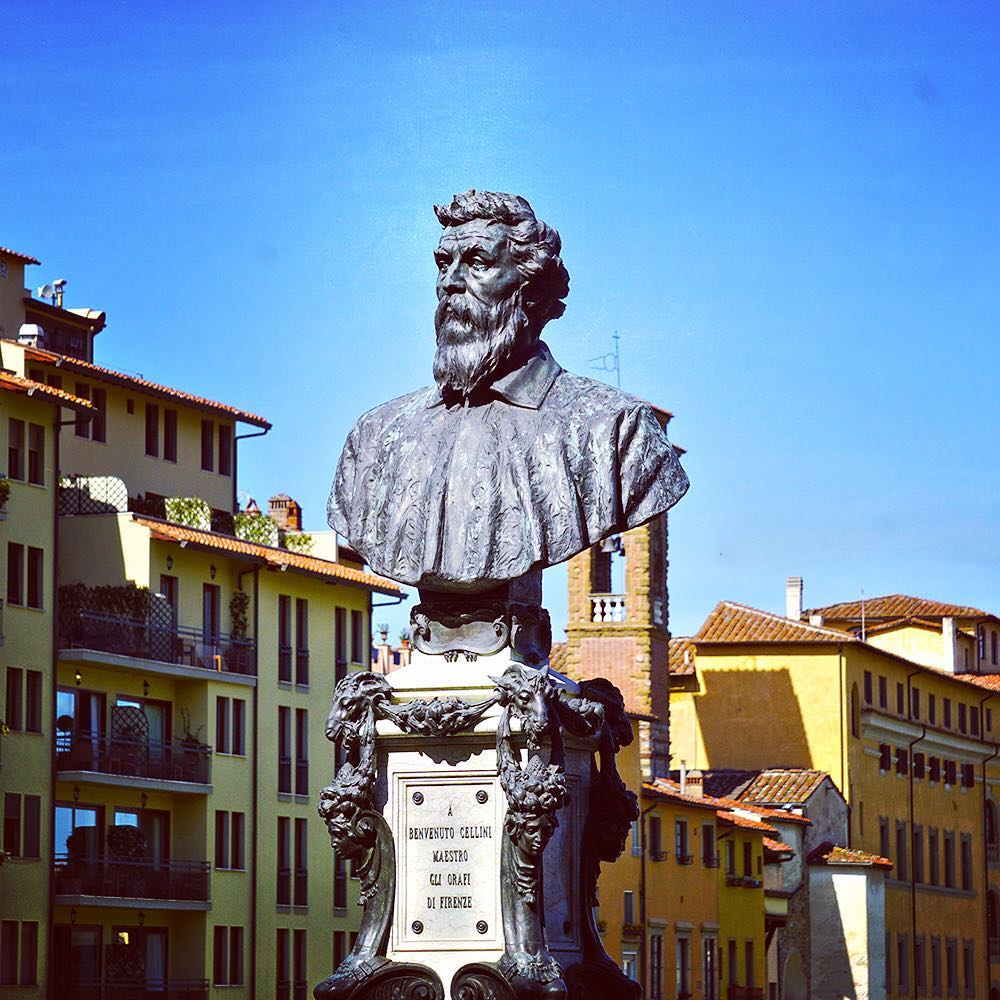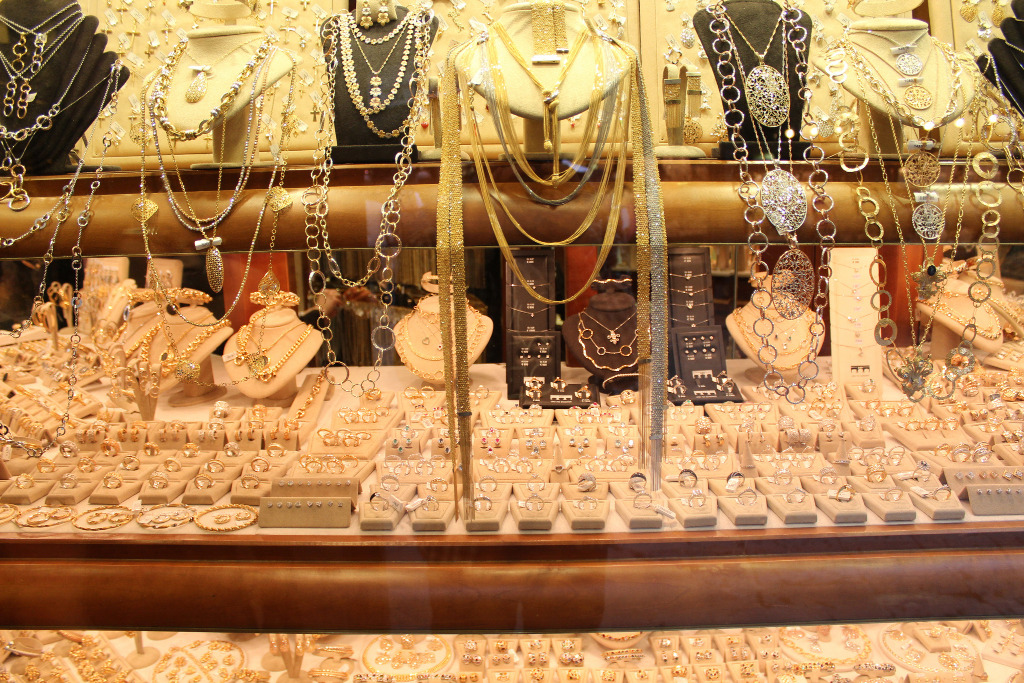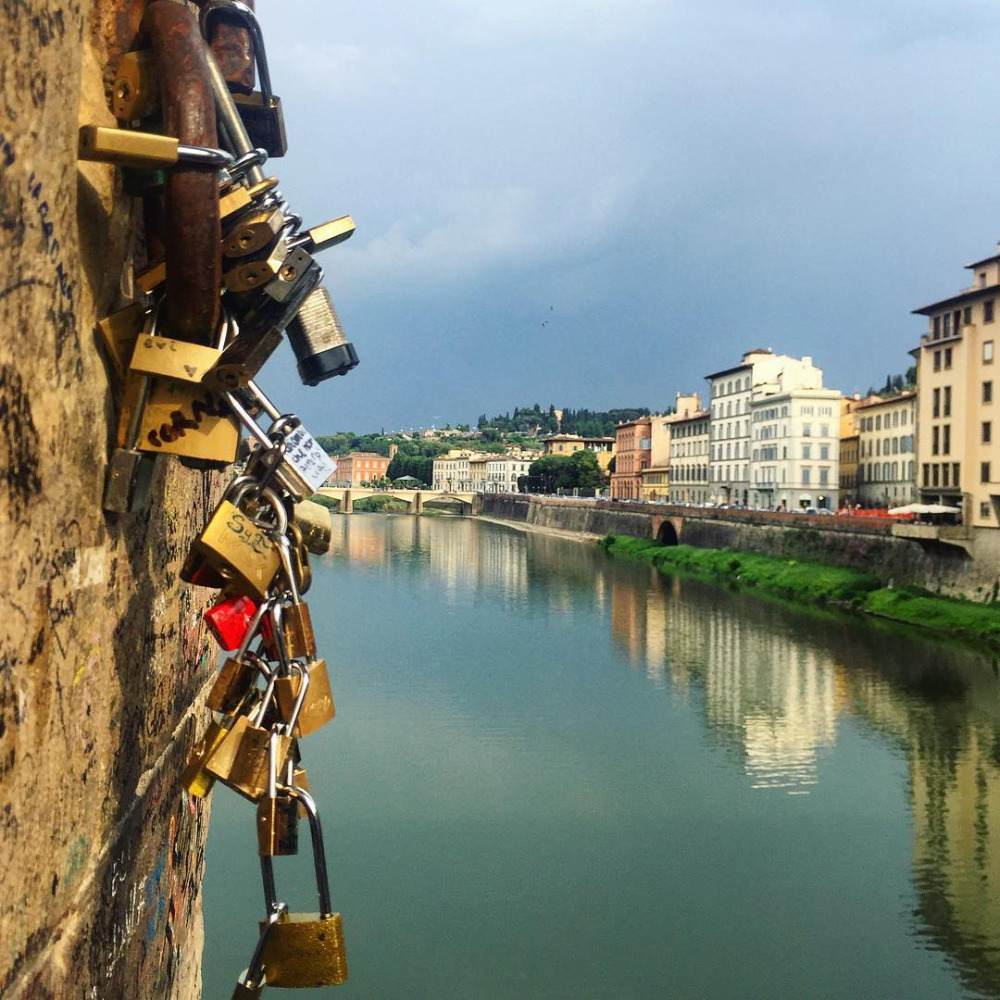Ponte Vecchio, the Symbol of Florence since the Middle Ages
The jewellery shops lining both sides of the Ponte Vecchio were formerly occupied by butchers and fishmongers; however, in 1565, the Vasari Corridor was built and the Medici Grand Dukes ordered the goldsmiths to replace the original tenants... can you guess why? Keep reading and find out more!
The Ponte Vecchio is perhaps the most popular symbol of Florence after Michelangelo's David; after all, it was the only bridge spared from destruction at the hands of the retreating Germans during World War II. Considered by many as one of the most romantic bridges in Italy, sweethearts from all over the world have been attaching their love locks to the railing around the statue of Benvenuto Cellini for about twenty years (by locking a love lock and throwing the key into the river, the lovers become eternally bonded...) and only a few people know that this tradition began in Florence and not in Rome (the padlock phenomenon at Ponte Milvio is just an imitation...).
History and Life on the Bridge
The first bridge named Ponte Vecchio was erected in Roman times, but it was wiped out by a number of floods of the River Arno. Some evidence suggests that in 1080 the bridge was made of wood and had only one arch; the five-arched stone bridge was built around 1170, but, once again, it was devastated by a violent flood (1333). The bridge was rebuilt in 1345 and in 1442 Florence's butchers and fishmongers established their business there; in 1565, Giorgio Vasari built the Vasari Corridor (so that the Medici could move freely and safely between Palazzo Vecchio – the government palace – and Palazzo Pitti – their chief residence...) and in 1593, reportedly due to the fact that the meat and fish market produced too much garbage and stench, Grand Duke Ferdinand I replaced the original tenants with goldsmiths and jewellers.

Everybody knows that the Ponte Vecchio was the only one saved from destruction by the retreating German army during World War II; according to rumours, this was because Adolf Hitler had visited it with Benito Mussolini in 1939 and had fond memories of the Bridge and the magnificent Corridor. Gerhard Wolf – the German consul in Florence – played a key role in the salvation of the bridge and for this and other reasons he was made an honorary citizen of the city and a plaque in his honour was placed on the bridge.

Nowadays the Ponte Vecchio is one of Florence’s top tourist attractions, some people visit the bridge because they love the way it looks, other people simply go shopping at its famous jewellery shops. Benvenuto Cellini's bust (the most famous Florentine goldsmith) is still there; however, in 2006, the city administration put a sign on the bridge mentioning a € 160 penalty for those caught locking padlocks to the fence. Sweethearts from all over the world – determined, but not too much – started locking their padlocks to the railing of the Lungarno degli Archibusieri.

Naturally the Ponte Vecchio is just one of the many wonders of the Cradle of the Renaissance. Here's an article about the Boboli Gardens, another most popular attraction of Florence.
Remember, Florence is just a stone's throw away from Pisa, Lari, Volterra, San Gimignano, Certaldo and other wonderful destinations!



